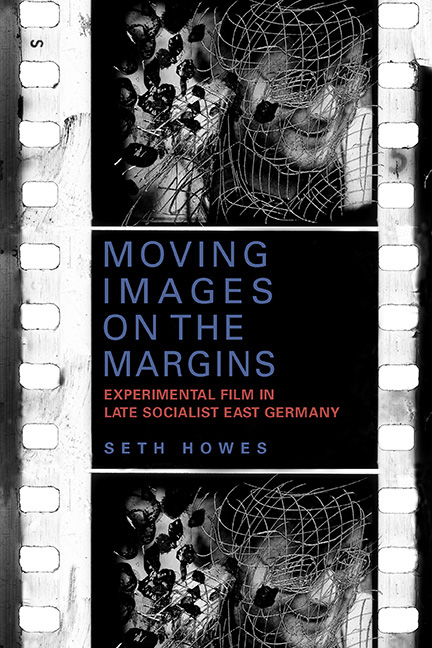Book contents
- Frontmatter
- Dedication
- Contents
- List of Illustrations
- Acknowledgments
- Introduction
- 1 Art, Experimentation, and the Avant-Garde in East Germany
- 2 Heraklesmaschine: Lutz Dammbeck's Experimental Cinema and the Expropriation of the Senses
- 3 Lines of Communication: Mail Art and the Connectivity of Experimental Film
- 4 Herz Horn Haut Schrein: Film and the Autoperforating Body of/at Work
- 5 Film Experiments, Design Anthropology, and the Politics of Vision: Yana Milev's Theory of Practice
- Conclusion: Images of Moving Margins
- Notes
- Bibliography
- Index
3 - Lines of Communication: Mail Art and the Connectivity of Experimental Film
Published online by Cambridge University Press: 21 March 2020
- Frontmatter
- Dedication
- Contents
- List of Illustrations
- Acknowledgments
- Introduction
- 1 Art, Experimentation, and the Avant-Garde in East Germany
- 2 Heraklesmaschine: Lutz Dammbeck's Experimental Cinema and the Expropriation of the Senses
- 3 Lines of Communication: Mail Art and the Connectivity of Experimental Film
- 4 Herz Horn Haut Schrein: Film and the Autoperforating Body of/at Work
- 5 Film Experiments, Design Anthropology, and the Politics of Vision: Yana Milev's Theory of Practice
- Conclusion: Images of Moving Margins
- Notes
- Bibliography
- Index
Summary
This thought discloses itself to you
Keep thinking it
—Robert RehfeldtIntroduction: ‘Be Art in the Gears!’
ON APRIL 29, 1981, an exhibition of artworks by Thomas Ranft and Michael Morgner opened in the Galerie Oben, a small space in the city center of Karl-Marx-Stadt (now Chemnitz). Cofounders of the artists’ collective and producers’ gallery Clara Mosch—its name was an amalgamation of its five founders’ names—since 1977 they and their cohorts had produced an ambitious program of art undertakings that included painting, photography, performances, and even landart actions, which the group called Pleinairs. Known like the Galerie Oben for its openness to experimental work by younger artists, the Clara Mosch gallery had a reputation for creative hangings of innovative pieces. Many of its exhibits featured works by the five cofounders. Together, these two venues earned the provincial city the reputation of being a hub of progressive arts—due in no small part, notes Claudia Mesch, to the ‘liberal art policies’ of the Galerie and ‘of the affiliated artists’ union that oversaw it.’
Though based in Karl-Marx-Stadt, the Clara Mosch artists had trained professionally at the Academy of Graphic and Book Art (HGB) in Leipzig, and remained friends with HGB cohort-mates in other cities, including Dammbeck and the Tangente circle in Leipzig. When Morgner and Ranft exhibited new works in April 1981, then, the event was not attended only by a few fixtures on Karl-Marx-Stadt's art scene, and perhaps some passersby who noticed the small gallery's lights were on: international visitors from West Germany and the United States were there, and so was Klaus Werner, curator of the progressive Galerie Arkade on East Berlin's Strausberger Platz, as well as the artist Robert Rehfeldt— also based in East Berlin. That night Rehfeldt offered some remarks contextualizing Ranft’s and Morgner's exhibited works with respect to artistic trends he saw taking shape in the GDR at large. Highlighting an increased interest in process-based art, non-objective art-making, and the use of objets trouvés, Rehfeldt predicted that galleries would increasingly take on an archival function by putting the residues of past art actions on display. ‘By contrast with the throwaway society of the Federal Republic,’ he wrily remarked, ‘we here [in the GDR] are a conservation society’—that is, a society that retained things, rather than tossing them aside.
- Type
- Chapter
- Information
- Moving Images on the MarginsExperimental Film in Late Socialist East Germany, pp. 74 - 103Publisher: Boydell & BrewerPrint publication year: 2019



